Themed collection Commemorative issue in honour of Jan van der Leun

Commemorative issue in honour of Jan van der Leun, 14 June 1928–6 July 2016
Welcome to this Photochemical & Photobiological Sciences special issue dedicated to Jan van der Leun.
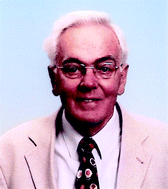
Photochem. Photobiol. Sci., 2018,17, 1815-1815
https://doi.org/10.1039/C8PP90050G
Phototherapy of cutaneous T-cell lymphomas
Cutaneous T-cell lymphomas (CTCL) are a heterogenous group of non-Hodgkin lymphomas arising in the skin. Phototherapy with ultraviolet radiation, introduced in 1976, is still a mainstay of treatment. Depending on CTCL variant and stage psoralen and ultraviolet A, narrow-band ultraviolet B, or photopheresis are used and can provide effective palliation for many patients.
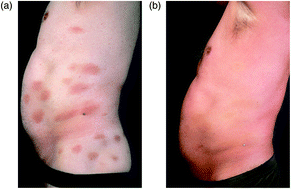
Photochem. Photobiol. Sci., 2018,17, 1904-1912
https://doi.org/10.1039/C8PP00170G
Drug and chemical induced photosensitivity from a clinical perspective
Drug photosensitivity is a relatively common occurrence and a range of mechanisms may be involved.
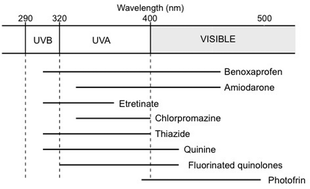
Photochem. Photobiol. Sci., 2018,17, 1885-1903
https://doi.org/10.1039/C8PP00011E
Melanoma – role of the environment and genetics
This paper illustrates the independent and interactive role of genetic and environmental factors in the etiology of melanoma.
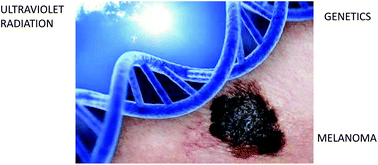
Photochem. Photobiol. Sci., 2018,17, 1853-1860
https://doi.org/10.1039/C7PP00411G
Solar UV damage to cellular DNA: from mechanisms to biological effects
Solar ultraviolet (UV) radiation generates bulky photodimers at di-pyrimidine sites that pose stress to cells and organisms by hindering DNA replication and transcription.
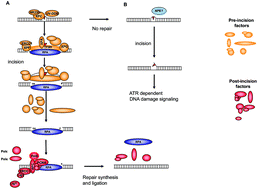
Photochem. Photobiol. Sci., 2018,17, 1842-1852
https://doi.org/10.1039/C8PP00182K
Mechanistic considerations on the wavelength-dependent variations of UVR genotoxicity and mutagenesis in skin: the discrimination of UVA-signature from UV-signature mutation
Based on the polη-dependent TLS across deaminated CPDs, the wavelength dependence of UVR mutations can be explained by different photochemistries of CPD formation, the singlet/triplet and collective excitations that cause UV-signature and UVA-signature mutations, respectively.
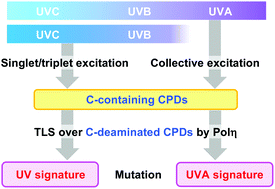
Photochem. Photobiol. Sci., 2018,17, 1861-1871
https://doi.org/10.1039/C7PP00360A
Formation of UV-induced DNA damage contributing to skin cancer development
UV-induced DNA damage plays a key role in the initiation phase of skin cancer. Their yield and chemical structure strongly depend on the wavelength.
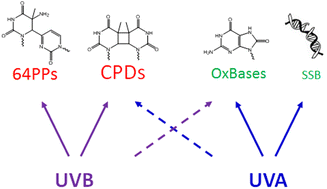
Photochem. Photobiol. Sci., 2018,17, 1816-1841
https://doi.org/10.1039/C7PP00395A
Ultraviolet radiation-induced immunosuppression and its relevance for skin carcinogenesis
Major steps in the pathway leading to the increased risk of skin cancer by the immunosuppression induced by UVR exposure.
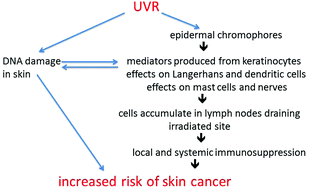
Photochem. Photobiol. Sci., 2018,17, 1872-1884
https://doi.org/10.1039/C7PP00312A
Low wintertime pre-diagnostic vitamin D status is associated with an increased risk of internal malignancies in kidney transplant recipients
Kidney transplant recipients with the lowest wintertime vitamin D levels appear to run the highest risk of internal malignancies. The effect was strongest in women.
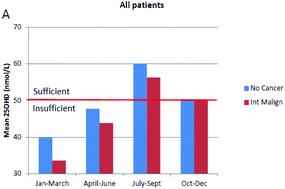
Photochem. Photobiol. Sci., 2018,17, 1946-1955
https://doi.org/10.1039/C7PP00404D
Climate change and its relationship with non-melanoma skin cancers
The increase in ambient temperature due to climate change is expected to affect the carcinogenicity of squamous cell carcinoma (SCC) and basal cell carcinoma (BCC).
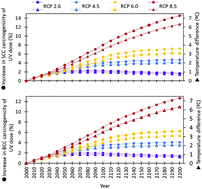
Photochem. Photobiol. Sci., 2018,17, 1913-1917
https://doi.org/10.1039/C7PP00405B
Solar UV radiation and microbial life in the atmosphere
Many microorganisms are alive while suspended in the atmosphere, but are exposed to solar ultraviolet (UV) radiation from all directions. Geographic and seasonal patterns of DNA-damaging UV doses can be estimated from observations as well as modeling.
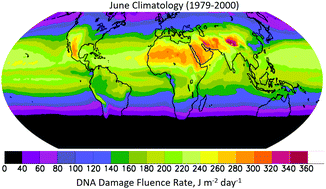
Photochem. Photobiol. Sci., 2018,17, 1918-1931
https://doi.org/10.1039/C7PP00407A
Are current guidelines for sun protection optimal for health? Exploring the evidence
At UVI < 3, sun protection is not recommended, but UVA irradiance may be high; even short exposures may incur health risks. Duration of exposure must be considered with UVI for risks and benefits of sun exposure.
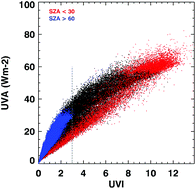
Photochem. Photobiol. Sci., 2018,17, 1956-1963
https://doi.org/10.1039/C7PP00374A
Mechanisms of and variables affecting UVR photoadaptation in human skin
Humans have been exposed to solar UV radiation since their appearance on Earth and evolution has enabled most individuals to adapt to this exposure, to some degree.
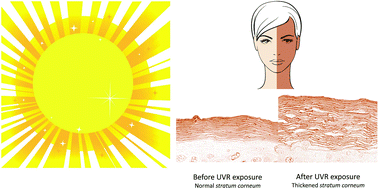
Photochem. Photobiol. Sci., 2018,17, 1932-1940
https://doi.org/10.1039/C7PP00430C
Ultraviolet erythema: dose response and mediator diffusion
The earliest contribution made by Jan van der Leun to the field of photobiology was studying the mechanism of UV-induced erythema in human skin – a subject he chose for his PhD in the 1960s.

Photochem. Photobiol. Sci., 2018,17, 1941-1945
https://doi.org/10.1039/C7PP00228A
About this collection
This commemorative issue is in honour of the memory and achievements of Jan van der Leun, as an eminent biophysicist and warm-hearted colleague and friend.
Janet F. Bornman and Frank R. de Gruijl (Guest Editors)